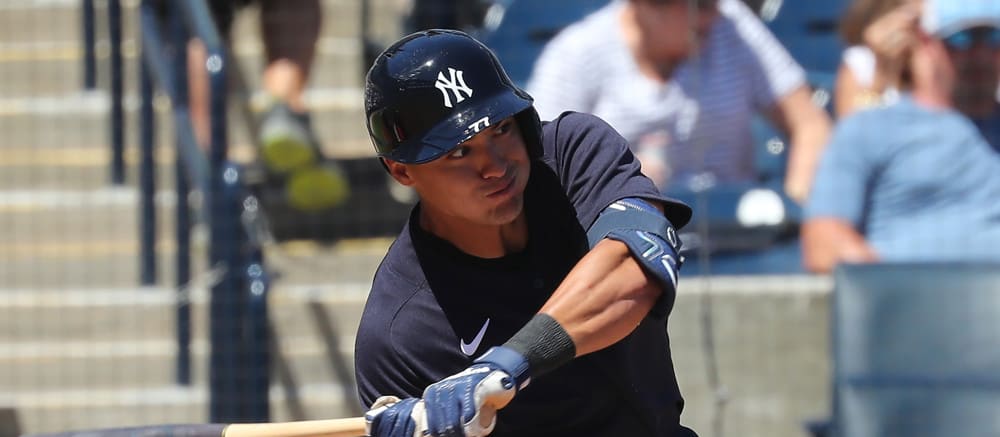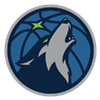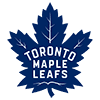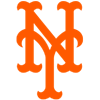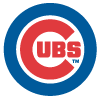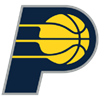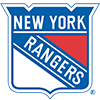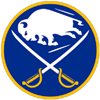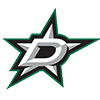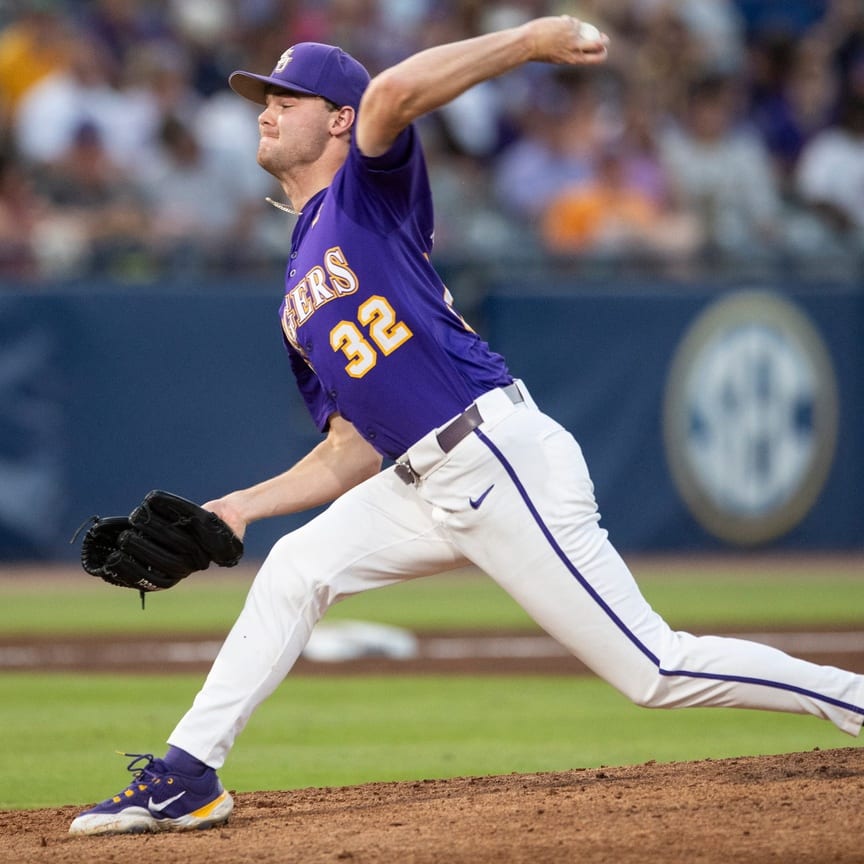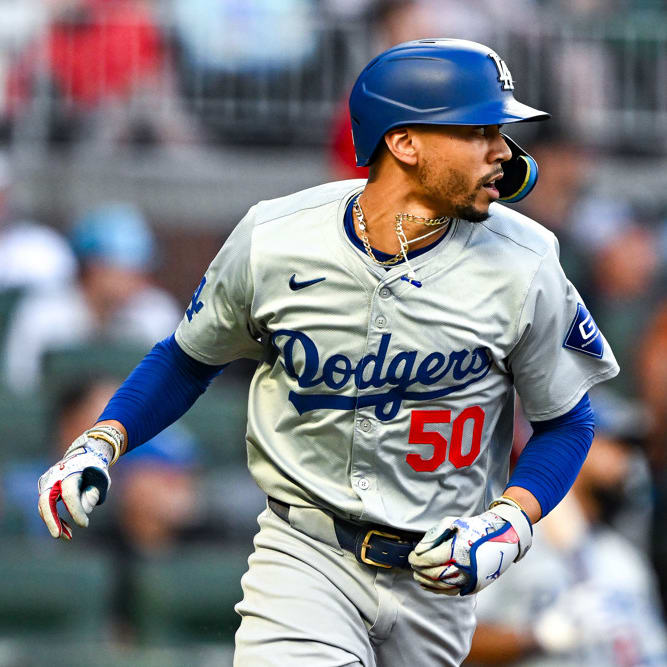Draft season isn't quite over — I've somehow managed to have drafts scheduled Tuesday, Wednesday and Thursday night this week — but I'm very much ready for the regular season to begin. Maybe it's just a hangover from the fantastic World Baseball Classic. Maybe I've simply forgotten how long a normal offseason is, given that we haven't had one since 2019. But this brief window between the end of the Grapefruit and Cactus Leagues and the start of the regular season seems to be stretching on longer than I can remember.
Whether these few days are a bore or a time for you to get even more excited about your fantasy team may depend heavily on which of the players featured in this article you wound up with. If you're the sort of drafter who always wants to get in on the next widely hyped rookie, you might be having a fantastic week, provided the rookie you wound up with was Jordan Walker or Anthony Volpe and not Grayson Rodriguez. I whiffed on the former pair, as I evidently underrated their chances of breaking camp in my early drafts and then was unwilling to pay their elevated price tags once it became clear they were making the team. I'm going to try to be more open to that sort of player in January and February drafts next year, as I don't think I've fully adjusted to the reduced amount of service-time manipulation under the new Collective Bargaining Agreement.
Instead,
Draft season isn't quite over — I've somehow managed to have drafts scheduled Tuesday, Wednesday and Thursday night this week — but I'm very much ready for the regular season to begin. Maybe it's just a hangover from the fantastic World Baseball Classic. Maybe I've simply forgotten how long a normal offseason is, given that we haven't had one since 2019. But this brief window between the end of the Grapefruit and Cactus Leagues and the start of the regular season seems to be stretching on longer than I can remember.
Whether these few days are a bore or a time for you to get even more excited about your fantasy team may depend heavily on which of the players featured in this article you wound up with. If you're the sort of drafter who always wants to get in on the next widely hyped rookie, you might be having a fantastic week, provided the rookie you wound up with was Jordan Walker or Anthony Volpe and not Grayson Rodriguez. I whiffed on the former pair, as I evidently underrated their chances of breaking camp in my early drafts and then was unwilling to pay their elevated price tags once it became clear they were making the team. I'm going to try to be more open to that sort of player in January and February drafts next year, as I don't think I've fully adjusted to the reduced amount of service-time manipulation under the new Collective Bargaining Agreement.
Instead, my My Players page is full of a few too many players who got bad news this past week. I wound up with more shares of Christopher Morel than any other hitter, and Tylor Megill and Braxton Garrett are tied for my second most-rostered pitcher. The silver lining is that those three players were particularly heavy targets of mine in early draft-and-hold or best-ball leagues. Those drafts are more about players' skills than their roles; it's hard to know in January who will be a team's fifth starter come August, so your best bet is to find someone with the talent to look good in the job and hope that talent wins out over the course of a long season. The fact that those players' Aprils won't look as good as I hoped doesn't mean their Junes or Augusts will also disappoint.
Of course, drafting this close to Opening Day is a different game. In January and February, you can zero in on projected talent and hope your picks will perform well enough in spring to win a job, but in late March, the focus shifts to more practical matters such as roster construction. I worry that the fact that I ended up with a few too many shares of job-battle losers in redraft leagues is a sign that I didn't shift from a talent-focused mindset to a role-focused mindset early enough. My late-round targets in a January draft-and-hold should be different from my late-round targets in a mid-March redraft league. It could just be a small sample of incorrect guesses, but it's something to keep in mind for next winter.
For now, we'll move onto this week's biggest movers, starting with the two rookies who caught everyone's eye this spring. I've written up two more names than usual this week given the number of job battles that were decided in the last few days.
Risers
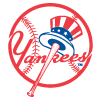 Anthony Volpe, SS, Yankees: It's been clear since Volpe broke out at the Single-A and High-A levels in 2021 that he was the shortstop of the future at Yankee Stadium, but you could be forgiven for doubting that the future would arrive on Opening Day. Take a look at a few key numbers for Volpe as he climbed the ladder the last two seasons:
Anthony Volpe, SS, Yankees: It's been clear since Volpe broke out at the Single-A and High-A levels in 2021 that he was the shortstop of the future at Yankee Stadium, but you could be forgiven for doubting that the future would arrive on Opening Day. Take a look at a few key numbers for Volpe as he climbed the ladder the last two seasons:
| Level | PA | BB% | K% | ISO | wRC+ |
|---|---|---|---|---|---|
| A | 257 | 19.8 | 16.7 | .322 | 186 |
| A+ | 256 | 10.5 | 22.7 | .300 | 154 |
| AA | 497 | 11.5 | 17.7 | .220 | 122 |
| AAA | 99 | 8.1 | 30.3 | .169 | 91 |
If you looked at that pattern and saw a player with promise who clearly still had something to prove in the minors, you weren't alone. Through the end of February, his NFBC ADP sat at 431, with Joey Wendle and Kyle Farmer the closest-ranked shortstops. That mark jumped to 276 in the first three weeks of March and has shot all the way up to 156 over the past week, with a minimum pick of 63. It's entirely possible the hype has gone too far, as even the most optimistic projection (ZiPS) at FanGraphs gives him a modest 108 wRC+, but it's not hard to see why his Opening Day debut has gotten everyone excited. If he steals even half of the 50 bases he stole in the minors last year while posting a wRC+ in that range, he'll look a lot like Marcus Semien, who has an ADP of 33 after swiping 25 bases and posting a 107 wRC+ last season.
 Jordan Walker, 3B, Cardinals: I don't normally write up the same player in two consecutive Barometers, but it feels warranted for a player generating as much hype as Walker. Since I last discussed him, he's returned from what proved to be a very minor shoulder injury and has officially made the team, something that seemed likely but not guaranteed at that point. While the Cardinals' roster remains crowded, they didn't call him up without the intention of giving him as many at-bats as he's able to earn, so there's no reason to worry about his playing time if he hits as well as his backers think he can. After hitting .306 with 19 homers and 22 steals in 119 games for Double-A Springfield last season, it's easy why the 6-foot-5 20-year-old has gotten everyone excited. It's fair to question whether his long arms will lead to high strikeout rates after a jump to the highest level, but his 21.6 percent strikeout rate last season gives little reason to fear that whiffs will completely obscure his 80-grade raw power. If you're looking to console yourself after failing to draft him anywhere, you could point to the fact that even the most optimistic projection — ATC, with a .254/.313/.401 line paired with 13 homers and 12 steals — fails to come close to justifying his ADP, which sat at 106 in the Main Event over the weekend. But if you're looking for the sort of player who could massively outplay his projections, this is what they look like.
Jordan Walker, 3B, Cardinals: I don't normally write up the same player in two consecutive Barometers, but it feels warranted for a player generating as much hype as Walker. Since I last discussed him, he's returned from what proved to be a very minor shoulder injury and has officially made the team, something that seemed likely but not guaranteed at that point. While the Cardinals' roster remains crowded, they didn't call him up without the intention of giving him as many at-bats as he's able to earn, so there's no reason to worry about his playing time if he hits as well as his backers think he can. After hitting .306 with 19 homers and 22 steals in 119 games for Double-A Springfield last season, it's easy why the 6-foot-5 20-year-old has gotten everyone excited. It's fair to question whether his long arms will lead to high strikeout rates after a jump to the highest level, but his 21.6 percent strikeout rate last season gives little reason to fear that whiffs will completely obscure his 80-grade raw power. If you're looking to console yourself after failing to draft him anywhere, you could point to the fact that even the most optimistic projection — ATC, with a .254/.313/.401 line paired with 13 homers and 12 steals — fails to come close to justifying his ADP, which sat at 106 in the Main Event over the weekend. But if you're looking for the sort of player who could massively outplay his projections, this is what they look like.
 Jeffrey Springs, SP, Rays: Every spring, one or two players rise not due to any apparent role or skills change but simply due to the collective attention of sharp drafters shifting their way. Springs seems to be that guy this year. His overall NFBC ADP sits at 164, but he's gone at pick 110 on average in the Main Event. The lefty has all the qualities you'd expect to see in a pitcher who's been broadly overlooked: he's a 30-year-old who's been a full-time starter for less than a full season who pitches for a small-market team. His stat line last season in 33 appearances (25 starts) probably deserved more attention, as he backed up his 2.46 ERA with a 26.2 percent strikeout rate and 5.6 percent walk rate. Other pitchers who finished within a point of both marks include Zac Gallen, Zack Wheeler, Nestor Cortes, Triston McKenzie and Yu Darvish. There could be some concerns about his workload given how many years he spent as a reliever, but he threw 135.1 frames last season, so reaching 150 or 160 this year shouldn't be too tough with good health.
Jeffrey Springs, SP, Rays: Every spring, one or two players rise not due to any apparent role or skills change but simply due to the collective attention of sharp drafters shifting their way. Springs seems to be that guy this year. His overall NFBC ADP sits at 164, but he's gone at pick 110 on average in the Main Event. The lefty has all the qualities you'd expect to see in a pitcher who's been broadly overlooked: he's a 30-year-old who's been a full-time starter for less than a full season who pitches for a small-market team. His stat line last season in 33 appearances (25 starts) probably deserved more attention, as he backed up his 2.46 ERA with a 26.2 percent strikeout rate and 5.6 percent walk rate. Other pitchers who finished within a point of both marks include Zac Gallen, Zack Wheeler, Nestor Cortes, Triston McKenzie and Yu Darvish. There could be some concerns about his workload given how many years he spent as a reliever, but he threw 135.1 frames last season, so reaching 150 or 160 this year shouldn't be too tough with good health.
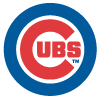 Hayden Wesneski, SP, Cubs: After recording a 2.18 ERA and 33:7 K:BB in his 33-inning debut last season, Wesneski was a pitcher many drafters were hoping would break camp in the rotation, but he didn't enter camp with a locked-in role even with Kyle Hendricks out with a shoulder injury. Adrian Sampson would have been a much less exciting alternative, but it wouldn't have been a shock to see him open with the job after posting a 3.11 ERA in 21 outings (19 starts last year). The decision was made easy for the Cubs in Cactus League play, however, as Wesneski cruised to a 2.12 ERA (and a 31.4 percent strikeout rate) while Sampson's ERA ballooned to 8.66. The one thing that gives me pause about Wesneski is that his 3.92 ERA, 23.2 percent strikeout rate and 7.9 percent walk rate in 24 Triple-A outings were rather pedestrian. His projections are tepid as a result, but between his success last September and this spring, I'm willing to pay the elevated price, which has jumped from pick 337 through March 14 to pick 265 over the last two weeks.
Hayden Wesneski, SP, Cubs: After recording a 2.18 ERA and 33:7 K:BB in his 33-inning debut last season, Wesneski was a pitcher many drafters were hoping would break camp in the rotation, but he didn't enter camp with a locked-in role even with Kyle Hendricks out with a shoulder injury. Adrian Sampson would have been a much less exciting alternative, but it wouldn't have been a shock to see him open with the job after posting a 3.11 ERA in 21 outings (19 starts last year). The decision was made easy for the Cubs in Cactus League play, however, as Wesneski cruised to a 2.12 ERA (and a 31.4 percent strikeout rate) while Sampson's ERA ballooned to 8.66. The one thing that gives me pause about Wesneski is that his 3.92 ERA, 23.2 percent strikeout rate and 7.9 percent walk rate in 24 Triple-A outings were rather pedestrian. His projections are tepid as a result, but between his success last September and this spring, I'm willing to pay the elevated price, which has jumped from pick 337 through March 14 to pick 265 over the last two weeks.
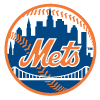 David Peterson, SP, Mets: I've liked both Peterson and Tylor Megill since the start of draft season, as the sixth starter job in Queens is the best one in the business. The Mets have possibly the best combination of team quality and park in the league, and their very old rotation was always going to need to call on replacements early and often. With Jose Quintana set to miss half the season due to rib surgery, that sixth-starter battle became a fifth-starter battle, and Peterson was declared the victor on Monday. Megill's 3.71 spring ERA was fine, but it came with a 12:13 K:BB, and while Peterson's 13:8 K:BB was also somewhat shaky, he allowed zero runs on one hit in 12 innings of work. Control problems are the main thing preventing the lefty from going from somewhat interesting to a true star. Of the 140 pitchers who threw at least 100 innings last season, Peterson ranked 20th in strikeout rate (27.8 percent) and 18th in groundball rate (49.4 percent) but sixth-worst in walk rate (10.6 percent).
David Peterson, SP, Mets: I've liked both Peterson and Tylor Megill since the start of draft season, as the sixth starter job in Queens is the best one in the business. The Mets have possibly the best combination of team quality and park in the league, and their very old rotation was always going to need to call on replacements early and often. With Jose Quintana set to miss half the season due to rib surgery, that sixth-starter battle became a fifth-starter battle, and Peterson was declared the victor on Monday. Megill's 3.71 spring ERA was fine, but it came with a 12:13 K:BB, and while Peterson's 13:8 K:BB was also somewhat shaky, he allowed zero runs on one hit in 12 innings of work. Control problems are the main thing preventing the lefty from going from somewhat interesting to a true star. Of the 140 pitchers who threw at least 100 innings last season, Peterson ranked 20th in strikeout rate (27.8 percent) and 18th in groundball rate (49.4 percent) but sixth-worst in walk rate (10.6 percent).
 Darick Hall, UT, Phillies: I'm including Hall here despite the fact I think the attention he's gotten from drafters since Rhys Hoskins' season-ending knee injury is almost entirely unwarranted. Hall won't see a playing-time bump in Hoskins' absence, as he was already set to start against righties while sitting against lefties and will continue to do so. He'll probably pick up first base eligibility earlier than he otherwise would have and now has a better chance at remaining in the lineup once Bryce Harper (elbow) returns, but the primary reason Hall's ADP sat all the way down at 603.2 prior to Hoskins' torn ACL was due to lack of ability, not lack of playing time. Hall's lopsided .250/.282/.522 slash line as a 26-year-old rookie was good for a 120 wRC+, and his 17.4 percent barrel rate was outstanding, but his plate discipline (31.0 percent strikeout rate, 3.5 percent walk rate) was about as bad as you'll ever see. His jump up to a 285.1 ADP in the Main Event over the weekend seems like an overreaction to the Hoskins injury, as the extra at-bats will likely find their way to players with little more than NL-Only relevance such as Josh Harrison, Edmundo Sosa or Jake Cave. To be fair to Hall, though, his 9:10 BB:K this spring is excellent, and if it foretells a sudden improvement to even below-average plate skills, he could justify the pick.
Darick Hall, UT, Phillies: I'm including Hall here despite the fact I think the attention he's gotten from drafters since Rhys Hoskins' season-ending knee injury is almost entirely unwarranted. Hall won't see a playing-time bump in Hoskins' absence, as he was already set to start against righties while sitting against lefties and will continue to do so. He'll probably pick up first base eligibility earlier than he otherwise would have and now has a better chance at remaining in the lineup once Bryce Harper (elbow) returns, but the primary reason Hall's ADP sat all the way down at 603.2 prior to Hoskins' torn ACL was due to lack of ability, not lack of playing time. Hall's lopsided .250/.282/.522 slash line as a 26-year-old rookie was good for a 120 wRC+, and his 17.4 percent barrel rate was outstanding, but his plate discipline (31.0 percent strikeout rate, 3.5 percent walk rate) was about as bad as you'll ever see. His jump up to a 285.1 ADP in the Main Event over the weekend seems like an overreaction to the Hoskins injury, as the extra at-bats will likely find their way to players with little more than NL-Only relevance such as Josh Harrison, Edmundo Sosa or Jake Cave. To be fair to Hall, though, his 9:10 BB:K this spring is excellent, and if it foretells a sudden improvement to even below-average plate skills, he could justify the pick.
Fallers
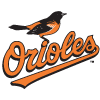 Grayson Rodriguez, SP, Orioles: At no point did the Orioles officially confirm Rodriguez would open the season in the big leagues, but it was widely assumed his spot wasn't in much doubt. He's on the 40-man roster and projects for an ERA 0.4 runs better than any other healthy Orioles starter per both ATC and THE BAT. The Orioles themselves said way back in January that Rodriguez was expected to break camp in the bigs, but they wound up demoting their prized pitching prospect Monday in what looks suspiciously like a case of service-time manipulation. Rodriguez didn't have a spotless spring, posting a 7.04 ERA in 15.1 innings of work, but that's not a number that's reliable in small samples. His 9.9 percent strikeout rate was a bit higher than you'd like, but when combined with a 26.8 percent strikeout rate, it should have been more than enough to crack a rotation which features such vaunted names as Dean Kremer, Cole Irvin and Tyler Wells. Rodriguez has nothing left to prove in the minors, having recorded a 2.20 ERA and 2.04 FIP in 14 Triple-A starts last year, and if Baltimore was serious about competing this season, he'd be on the Opening Day roster. The best fantasy players can hope for at this point is that the Orioles are as cynically exploitative as possible and call him up the second they've secured an extra year of service time.
Grayson Rodriguez, SP, Orioles: At no point did the Orioles officially confirm Rodriguez would open the season in the big leagues, but it was widely assumed his spot wasn't in much doubt. He's on the 40-man roster and projects for an ERA 0.4 runs better than any other healthy Orioles starter per both ATC and THE BAT. The Orioles themselves said way back in January that Rodriguez was expected to break camp in the bigs, but they wound up demoting their prized pitching prospect Monday in what looks suspiciously like a case of service-time manipulation. Rodriguez didn't have a spotless spring, posting a 7.04 ERA in 15.1 innings of work, but that's not a number that's reliable in small samples. His 9.9 percent strikeout rate was a bit higher than you'd like, but when combined with a 26.8 percent strikeout rate, it should have been more than enough to crack a rotation which features such vaunted names as Dean Kremer, Cole Irvin and Tyler Wells. Rodriguez has nothing left to prove in the minors, having recorded a 2.20 ERA and 2.04 FIP in 14 Triple-A starts last year, and if Baltimore was serious about competing this season, he'd be on the Opening Day roster. The best fantasy players can hope for at this point is that the Orioles are as cynically exploitative as possible and call him up the second they've secured an extra year of service time.
 Vaughn Grissom, 2B, Atlanta: Whispers that Grissom was no lock for the Opening Day roster date back to at least February, but the fantasy community dismissed the noise as nothing more than speculation. Through Feb. 9, the date those rumors first emerged, Grissom's NFBC ADP sat at 180, and his ADP actually improved to 162 over the next month. As it turns out, we should have listened. After failing to bring back Dansby Swanson and declining to bring in a replacement, it sure seemed as though Atlanta was prepared to anoint him as their next shortstop. Some of that may have been wishful thinking though, as fantasy players naturally wanted to see someone who hit .291/.353/.440 (121 wRC+) over 41 games as a 21-year-old rookie get the job. But it should have been clearer to all of us that the defensive concerns weren't merely a smokescreen. He almost exclusively played second base in the majors last season, and DRS, UZR and OAA all pegged him as a negative there. He's a rare example where "working on his defense" is a legitimate reason for a demotion, especially for a player who skipped Triple-A and only played 22 Double-A games before his debut.
Vaughn Grissom, 2B, Atlanta: Whispers that Grissom was no lock for the Opening Day roster date back to at least February, but the fantasy community dismissed the noise as nothing more than speculation. Through Feb. 9, the date those rumors first emerged, Grissom's NFBC ADP sat at 180, and his ADP actually improved to 162 over the next month. As it turns out, we should have listened. After failing to bring back Dansby Swanson and declining to bring in a replacement, it sure seemed as though Atlanta was prepared to anoint him as their next shortstop. Some of that may have been wishful thinking though, as fantasy players naturally wanted to see someone who hit .291/.353/.440 (121 wRC+) over 41 games as a 21-year-old rookie get the job. But it should have been clearer to all of us that the defensive concerns weren't merely a smokescreen. He almost exclusively played second base in the majors last season, and DRS, UZR and OAA all pegged him as a negative there. He's a rare example where "working on his defense" is a legitimate reason for a demotion, especially for a player who skipped Triple-A and only played 22 Double-A games before his debut.
 Christopher Morel, 2B/OF, Cubs: Morel was a polarizing player this draft season. One the one hand, he wasn't atop the depth chart anywhere and struck out 32.2 percent of the time as a rookie. On the other hand, his defensive versatility seemingly made him the top backup at half the spots on the diamond, and his 23.6 percent strikeout rate as a minor leaguer suggested his whiff problems were far from terminal. I thought those factors mitigated the downsides well enough and figured the Cubs would want to keep around someone who showed 88th percentile sprint speed, a 91st percentile barrel rate and 99th percentile arm strength, especially with Seiya Suzuki (oblique) on the shelf. I was wrong, as the team sent Morel down Monday. It's hard to argue too much with the decision given he struck out at a 42.1 percent clip in 22 Cactus League games. I'm still holding in deeper leagues, as he has plenty of paths back to the big leagues and has the skill set to be a star if he can just get his strikeout rate down to somewhere around 27 or 28 percent, but it's certainly a disappointing development.
Christopher Morel, 2B/OF, Cubs: Morel was a polarizing player this draft season. One the one hand, he wasn't atop the depth chart anywhere and struck out 32.2 percent of the time as a rookie. On the other hand, his defensive versatility seemingly made him the top backup at half the spots on the diamond, and his 23.6 percent strikeout rate as a minor leaguer suggested his whiff problems were far from terminal. I thought those factors mitigated the downsides well enough and figured the Cubs would want to keep around someone who showed 88th percentile sprint speed, a 91st percentile barrel rate and 99th percentile arm strength, especially with Seiya Suzuki (oblique) on the shelf. I was wrong, as the team sent Morel down Monday. It's hard to argue too much with the decision given he struck out at a 42.1 percent clip in 22 Cactus League games. I'm still holding in deeper leagues, as he has plenty of paths back to the big leagues and has the skill set to be a star if he can just get his strikeout rate down to somewhere around 27 or 28 percent, but it's certainly a disappointing development.
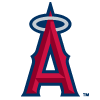 Carlos Estevez, RP, Angels: Estevez hasn't lost the Angels' closer job, as the team hasn't named anyone else to the role, but if things were going the way those who drafted Estevez hoped they would, he'd have officially won the job by now. The Angels tabbed him as the favorite to close heading into the spring after signing him to a two-year deal in December, but he wasn't allowed to simply walk into the job without earning it in camp. He hasn't come close to doing that, recording an awful 12.15 ERA, 2.55 WHIP and 27.0 percent walk rate across eight appearances. His game log offers reason for encouragement, however, as he had a 3:10 K:BB across his first five appearances before snapping out of it and posting a 6:0 K:BB over his last three. That should be enough to get him back in his manager's good graces, and he's still my best bet to earn the Angels' first save chance, but drafters who selected him were hoping to have a definite closer by now, not merely a probable one.
Carlos Estevez, RP, Angels: Estevez hasn't lost the Angels' closer job, as the team hasn't named anyone else to the role, but if things were going the way those who drafted Estevez hoped they would, he'd have officially won the job by now. The Angels tabbed him as the favorite to close heading into the spring after signing him to a two-year deal in December, but he wasn't allowed to simply walk into the job without earning it in camp. He hasn't come close to doing that, recording an awful 12.15 ERA, 2.55 WHIP and 27.0 percent walk rate across eight appearances. His game log offers reason for encouragement, however, as he had a 3:10 K:BB across his first five appearances before snapping out of it and posting a 6:0 K:BB over his last three. That should be enough to get him back in his manager's good graces, and he's still my best bet to earn the Angels' first save chance, but drafters who selected him were hoping to have a definite closer by now, not merely a probable one.
 Braxton Garrett, SP, Marlins: Garrett was one of my favorite targets in early drafts this offseason. His lack of a guaranteed rotation spot kept his price down, but it looked like he had every chance of winning a job, either by beating out Edward Cabrera or by convincing the Marlins to open with six starters. The team has decided to go with just five, and it will be Cabrera who earns the spot. Cabrera has more prospect pedigree, but Garrett is just one year older and was the seventh-overall pick in 2016. He also showed far better control last season, with a 6.4 percent walk rate compared to an 11.3 percent mark for Cabrera, while his strikeout rate (24.1 percent) trailed Cabrera's by less than two points. Cabrera's 1.80 spring ERA easily beat Garrett's 7.20 mark, but their respective K:BBs — 14:6 for Cabrera and 13:5 for Garrett — were almost identical. I still expect him to make a fair number of starts this season, so I'm not regretting my draft-and-hold shares too much, but I'm not sure he has the upside to be worth stashing in most redraft leagues.
Braxton Garrett, SP, Marlins: Garrett was one of my favorite targets in early drafts this offseason. His lack of a guaranteed rotation spot kept his price down, but it looked like he had every chance of winning a job, either by beating out Edward Cabrera or by convincing the Marlins to open with six starters. The team has decided to go with just five, and it will be Cabrera who earns the spot. Cabrera has more prospect pedigree, but Garrett is just one year older and was the seventh-overall pick in 2016. He also showed far better control last season, with a 6.4 percent walk rate compared to an 11.3 percent mark for Cabrera, while his strikeout rate (24.1 percent) trailed Cabrera's by less than two points. Cabrera's 1.80 spring ERA easily beat Garrett's 7.20 mark, but their respective K:BBs — 14:6 for Cabrera and 13:5 for Garrett — were almost identical. I still expect him to make a fair number of starts this season, so I'm not regretting my draft-and-hold shares too much, but I'm not sure he has the upside to be worth stashing in most redraft leagues.
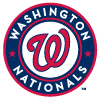 Juan Yepez, OF, Cardinals: In another organization, there'd be a good deal more excitement surrounding Yepez. In 76 games as a rookie last year, he hit a respectable .253/.296/.447 (good for a 109 wRC+), backing that line up with a league-average strikeout rate (22.3 percent) and an above-average barrel rate (9.2 percent). Even on a crowded Cardinals roster, it seemed as though he'd at least earn at-bats on the short side of a platoon, but the emergence of Jordan Walker led to a roster crunch that left Yepez the odd man out. His best path to fantasy relevance this season may come as trade bait. There are plenty of teams who could use a young hitter with an above-average bat, but the Cardinals are full of players who project similarly, and Yepez has the least defensive utility of all of them. Failing a move, Yepez is stuck waiting for someone ahead of him to get hurt or be demoted.
Juan Yepez, OF, Cardinals: In another organization, there'd be a good deal more excitement surrounding Yepez. In 76 games as a rookie last year, he hit a respectable .253/.296/.447 (good for a 109 wRC+), backing that line up with a league-average strikeout rate (22.3 percent) and an above-average barrel rate (9.2 percent). Even on a crowded Cardinals roster, it seemed as though he'd at least earn at-bats on the short side of a platoon, but the emergence of Jordan Walker led to a roster crunch that left Yepez the odd man out. His best path to fantasy relevance this season may come as trade bait. There are plenty of teams who could use a young hitter with an above-average bat, but the Cardinals are full of players who project similarly, and Yepez has the least defensive utility of all of them. Failing a move, Yepez is stuck waiting for someone ahead of him to get hurt or be demoted.


